If you are using Google Maps iOS SDK, seems there is no way to replace the default user location icon. However the default icon already has an arrow to indicate which direction user is going (simply call mapView.myLocationEnabled = true).
A workaround is to put a marker on user's current position, and change the marker image based on heading.
Sample Code (the full source code):
func RadiansToDegrees(radians: Double) -> Double {
return radians * 180.0/M_PI
}
func DegreesToRadians(degrees: Double) -> Double {
return degrees * M_PI / 180.0
}
var GeoAngle = 0.0
var locationManager = CLLocationManager()
var marker = GMSMarker()
override func viewDidLoad() {
super.viewDidLoad()
// Do any additional setup after loading the view, typically from a nib.
var camera = GMSCameraPosition.cameraWithLatitude(-33.86,
longitude: 151.20, zoom: 6)
var mapView = GMSMapView.mapWithFrame(CGRectZero, camera: camera)
self.view = mapView
marker.map = mapView
locationManager.delegate = self
locationManager.requestAlwaysAuthorization()
locationManager.startUpdatingLocation()
locationManager.startUpdatingHeading()
}
func locationManager(manager: CLLocationManager!, didUpdateToLocation newLocation: CLLocation!, fromLocation oldLocation: CLLocation!) {
var camera = GMSCameraPosition.cameraWithLatitude(newLocation.coordinate.latitude,
longitude: newLocation.coordinate.longitude, zoom: 15)
(self.view as GMSMapView).animateToCameraPosition(camera)
GeoAngle = self.setLatLonForDistanceAndAngle(newLocation)
marker.position = newLocation.coordinate
}
func locationManager(manager: CLLocationManager!, didUpdateHeading newHeading: CLHeading!) {
var direction = -newHeading.trueHeading as Double
marker.icon = self.imageRotatedByDegrees(CGFloat(direction), image: UIImage(named: "arrow.png")!)
}
func imageRotatedByDegrees(degrees: CGFloat, image: UIImage) -> UIImage{
var size = image.size
UIGraphicsBeginImageContext(size)
var context = UIGraphicsGetCurrentContext()
CGContextTranslateCTM(context, 0.5*size.width, 0.5*size.height)
CGContextRotateCTM(context, CGFloat(DegreesToRadians(Double(degrees))))
image.drawInRect(CGRect(origin: CGPoint(x: -size.width*0.5, y: -size.height*0.5), size: size))
var newImage = UIGraphicsGetImageFromCurrentImageContext()
UIGraphicsEndImageContext()
return newImage
}
func setLatLonForDistanceAndAngle(userLocation: CLLocation) -> Double {
var lat1 = DegreesToRadians(userLocation.coordinate.latitude)
var lon1 = DegreesToRadians(userLocation.coordinate.longitude)
var lat2 = DegreesToRadians(37.7833);
var lon2 = DegreesToRadians(-122.4167);
var dLon = lon2 - lon1;
var y = sin(dLon) * cos(lat2);
var x = cos(lat1) * sin(lat2) - sin(lat1) * cos(lat2) * cos(dLon);
var radiansBearing = atan2(y, x);
if(radiansBearing < 0.0)
{
radiansBearing += 2*M_PI;
}
return radiansBearing;
}
The key step is to change image based on the degree come from the func locationManager(manager: CLLocationManager!, didUpdateHeading newHeading: CLHeading!) method.
You also need to make sure to add NSLocationAlwaysUsageDescription and NSLocationWhenInUseUsageDescription in your info.plist file.


